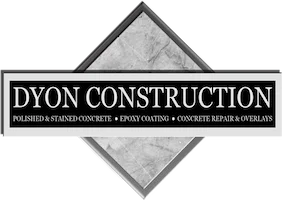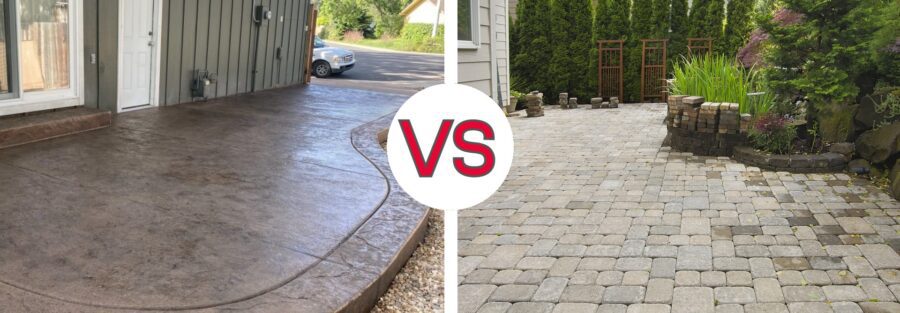Introduction
Creating an inviting outdoor space enhances the beauty and functionality of your home. Two popular choices for patios are stamped concrete and paver patios. Each offers distinct advantages and challenges, making the decision nuanced. This article delves into the specifics of stamped concrete and paver patios, examining their characteristics, benefits, and drawbacks to help you make an informed choice.
Overview of Stamped Concrete
Stamped concrete is a decorative concrete that mimics the appearance of other materials like brick, stone, or wood. This effect is achieved by pressing molds into the wet concrete surface and then coloring it to achieve the desired look. Stamped concrete offers a seamless and continuous surface, providing a cohesive and visually appealing patio solution. The process involves several steps, including pouring the concrete, adding color, stamping the patterns, and sealing the surface to protect against weathering and wear.
Overview of Paver Patios
Paver patios, conversely, consist of individual units made from materials like concrete, clay, or natural stone. These pavers are laid out in various patterns over a prepared base, typically comprising gravel and sand. The interlocking design of paver patios ensures durability and flexibility, allowing for easy repairs and modifications. Pavers come in a wide range of colors, shapes, and sizes, offering extensive design possibilities that can suit any aesthetic preference. The installation process, though labor-intensive, results in a highly durable and customizable patio surface.
Pros and Cons of Stamped Concrete
Stamped concrete provides several notable advantages. Its primary appeal lies in its ability to replicate high-end materials at a fraction of the cost. This makes it an economical choice for homeowners desiring a sophisticated look without breaking the bank. The seamless nature of stamped concrete means fewer opportunities for weed growth and easier maintenance. Additionally, the sealed surface offers resistance to stains and weather damage.
However, stamped concrete has its downsides. The surface, while durable, can crack over time due to ground movement or extreme temperatures. Repairs can be challenging, often requiring professional intervention to maintain the appearance and integrity of the design. The installation process also demands precision and expertise, as improper execution can lead to unsatisfactory results. Moreover, the surface can become slippery when wet, posing a potential hazard.
Pros and Cons of Paver Patios
Paver patios offer exceptional flexibility and durability. The individual pavers allow for easy repairs; damaged units can be replaced without disturbing the entire patio. This makes paver patios a practical choice for high-traffic areas. The variety of design options is another significant advantage, enabling homeowners to create unique and personalized outdoor spaces. The interlocking system also provides superior load distribution, enhancing the patio’s longevity.
Nonetheless, paver patios come with their own set of challenges. The installation process is labor-intensive and requires meticulous preparation of the base to prevent shifting and settling. Weeds can grow between the pavers, necessitating regular maintenance to keep the surface looking pristine. Additionally, while pavers are generally durable, the joints can allow for water infiltration, potentially leading to erosion or movement over time.
Cost Comparison
When it comes to cost, stamped concrete typically has a lower initial outlay compared to paver patios. The materials and labor involved in creating a stamped concrete surface are generally less expensive than the individual pavers and the extensive labor required for a paver patio installation. However, it’s essential to consider long-term costs. Stamped concrete might require more frequent repairs and resealing, which can add up over time. On the other hand, while paver patios have a higher upfront cost, their longevity and ease of repair can result in lower maintenance expenses in the long run.
Maintenance Comparison
Maintenance is a critical factor in choosing between stamped concrete and paver patios. Stamped concrete requires periodic resealing to maintain its appearance and protect against stains and weather damage. Cracks, if they occur, need to be addressed promptly to prevent further deterioration. Regular cleaning with mild detergent and water is typically sufficient to keep the surface looking good.
Paver patios, while requiring more initial maintenance to prevent weed growth and shifting, are relatively easy to care for once properly installed. Sweeping and occasional washing with a hose or pressure washer are usually enough to maintain their appearance. The ability to replace individual pavers without affecting the entire patio is a significant advantage, simplifying repairs and ensuring the longevity of the surface.
Aesthetic and Design Options
Aesthetic appeal and design flexibility are crucial considerations. Stamped concrete offers a wide range of patterns and colors, allowing homeowners to replicate the look of more expensive materials. This makes it an attractive option for those seeking a luxurious appearance on a budget. The seamless nature of stamped concrete also provides a clean and cohesive look.
Paver patios, however, offer unparalleled design versatility. With a vast array of paver shapes, sizes, colors, and textures available, the design possibilities are virtually limitless. This allows homeowners to create intricate patterns and unique designs that reflect their personal style. The modular nature of pavers also means that designs can be easily modified or expanded in the future.
Conclusion
Both stamped concrete and paver patios present compelling options for enhancing your outdoor living space. Stamped concrete stands out for its cost-effectiveness and ability to mimic high-end materials, making it an excellent choice for those seeking an elegant yet economical solution. Paver patios, with their exceptional durability, design flexibility, and ease of repair, offer a robust and customizable option for creating unique and lasting outdoor spaces. Ultimately, the decision will depend on your specific needs, budget, and aesthetic preferences.

